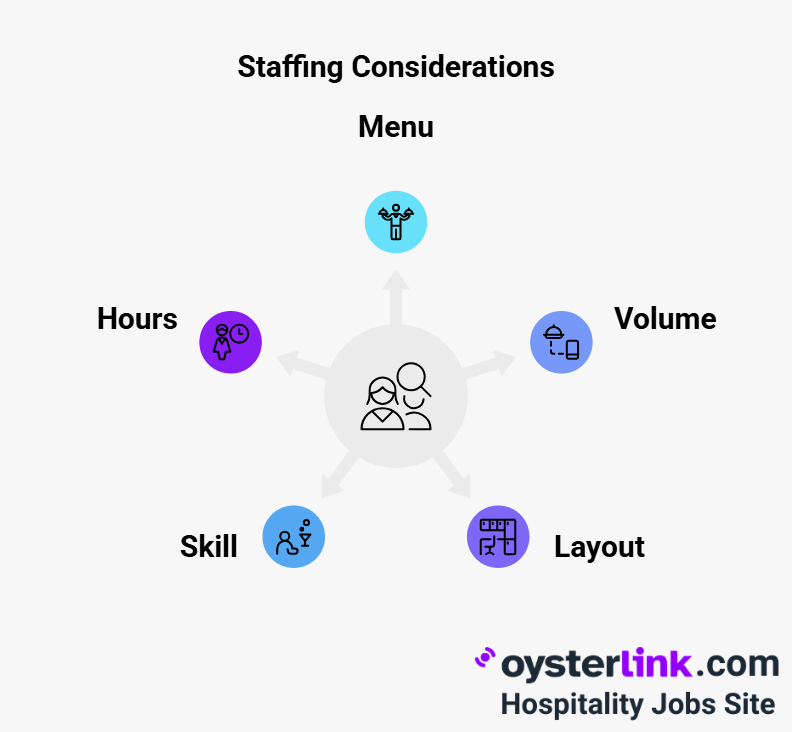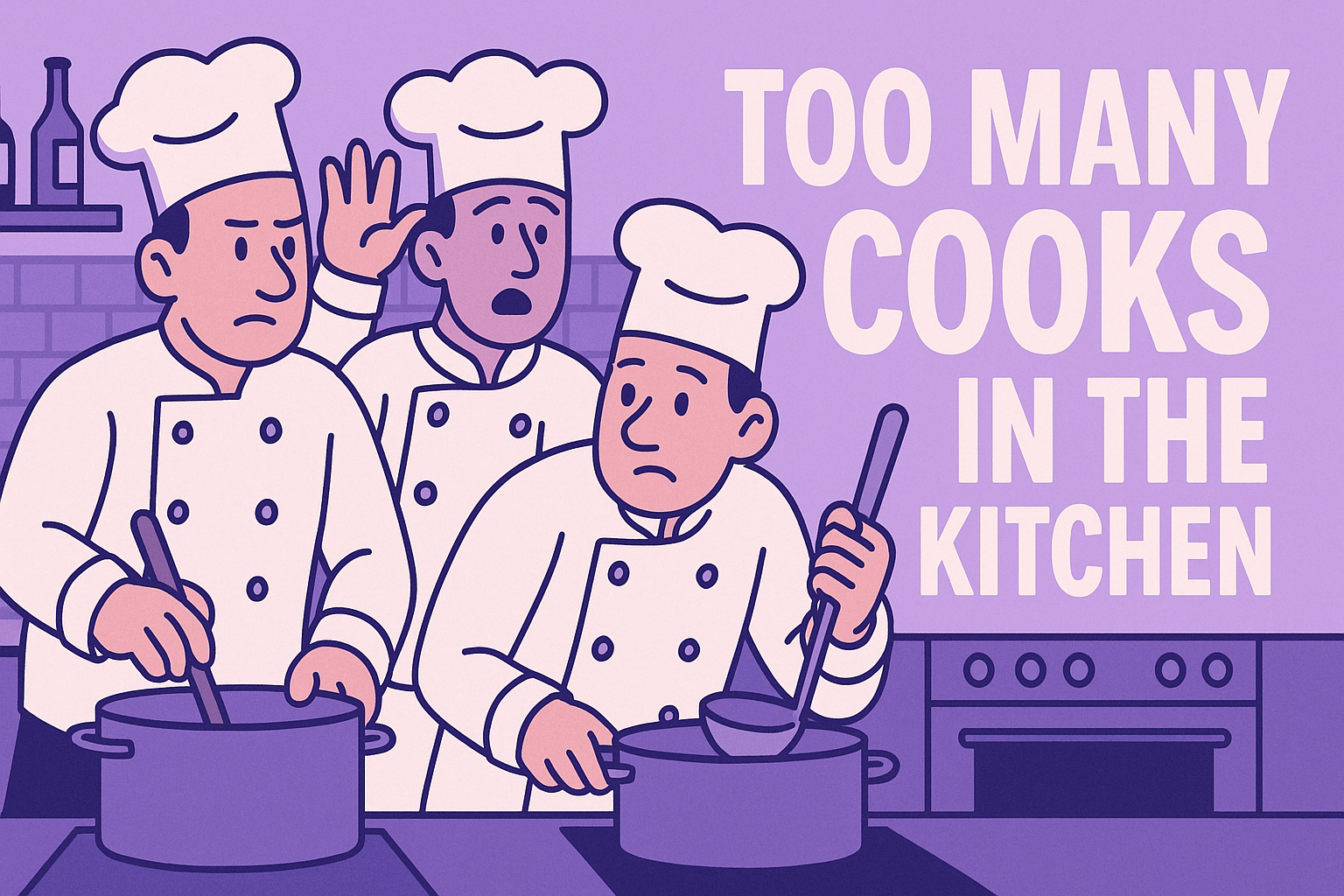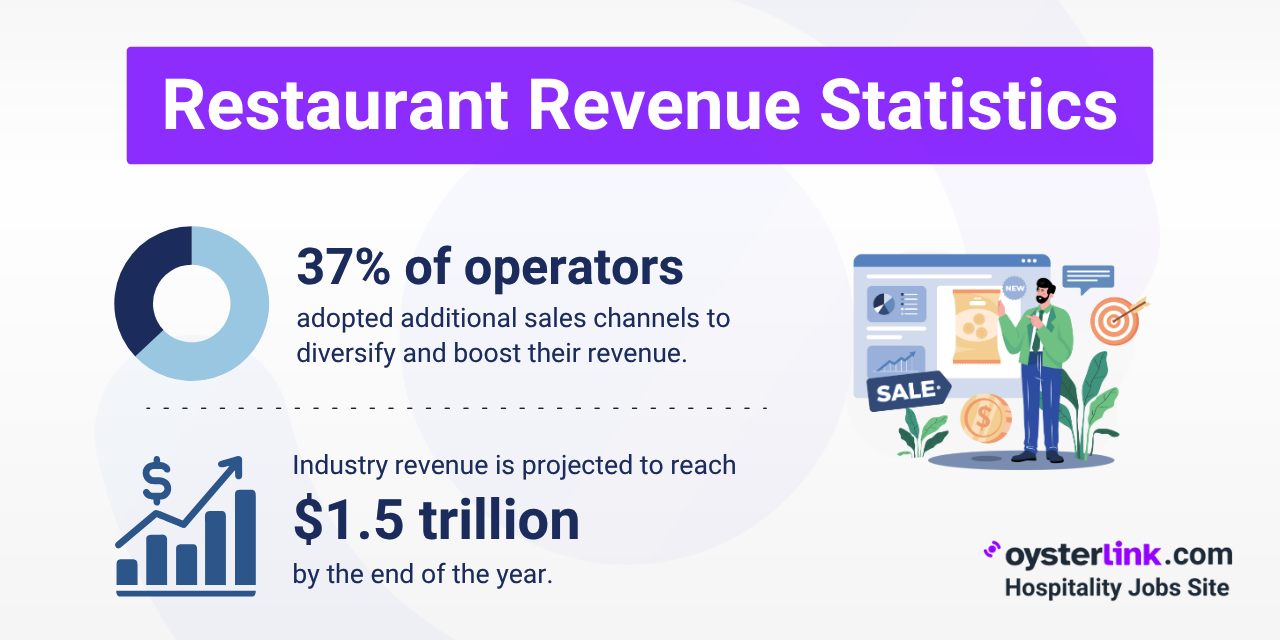Imagine a veteran Head Chef leaning over a kitchen stove, telling a rookie restaurateur: “The secret to smooth service isn’t just the recipes – it’s having just the right crew.” In kitchens big or small, getting the headcount right is an art and a science.
Different formats – a drive-thru burger stand, a 50-seat casual bistro, or a white-tablecloth tasting menu – each demand different staffing.
Size and layout matter, larger restaurants or those with multiple dining areas will need more staff to cover the space effectively, and fast-food establishments require fewer employees per shift compared to full-service or fine dining.
In practice, a food truck might run with as few as 2–3 people on shift, whereas a busy counter-service café often keeps under a dozen total staff.
A typical 50-seat casual restaurant might aim for about 4 back-of-house cooks per 50 diners, while a fine-dining kitchen can be twice that dense – on the order of 6 cooks for every 50 guests.
In short, the more complex and service-intensive the concept, the higher the cook-to-guest ratio.
Staffing Factors: Menu, Volume, Layout, Skill and Hours
A savvy Chef will ask: "What exactly do you serve, and when?"
Menu Complexity is Huge
A 5-course French tasting menu means many stations and prep tasks, whereas a small-plates café may need less. Heavy prep or many specialty stations increase labor-hours.
Many items requiring difficult production techniques…will require more preparation time per item.
In practice, Chefs often thin down huge menus not just to cut food costs, but to keep the line sane:
“Sprawling menus are difficult to manage…paring down the menu reduces stress for everyone in the kitchen”.

Volume and Busy Times are Equally Critical
A weekend dinner rush of 200 covers in two hours needs more Cooks than a quiet weekday lunch. You can think in covers-per-hour: many ops use a rule of thumb like “one cook per 50–70 meals served per hour”.
So if your peak hour tops 200 meals, that suggests roughly 3–4 cooks on the line (plus prep hands). Similarly, a restaurant open for three meal periods (breakfast, lunch, dinner) will need enough staff to cover all shifts (and days off).
The volume of business will affect the amount of labour required…Each restaurant will have a minimum staffing level without which it cannot operate.
Upshots: track your busiest hours and days, and schedule extra (or trim) accordingly.
Kitchen Layout & Equipment can Limit how Many Cooks You can Use Effectively
A cramped galley line or widely separated stations slows down service.
In fact, poor kitchen layout can limit the number of individuals who can work efficiently. If prep tables are far from the stove, you might need an extra prep cook so no one makes extra trips.
By contrast, a well-designed kitchen minimizes wasted steps and misfires, leading to faster service and improved productivity.
A tight, efficient design can mean you can do more with fewer cooks; a sprawling, poorly planned space effectively raises your minimum staffing floor.
Skill Level and Flexibility of Your Crew are Also Factors
A seasoned sous-chef can run a station solo, while new cooks might need teammates. Think cross-training: a cook who can flip from grill to fry on the fly will handle more covers than a novice at one task.
This is why some operators schedule one “key” cook and backfill with part-timers or apprentices.
In practice, having a core of very experienced cooks may let you get away with a slightly leaner crew – but only up to a point.
Bottom line: you need enough skilled hands to cover all tasks in peak times without overload.
Peak vs. Off-peak Scheduling Rounds Out the Picture
Big swings in traffic (weekday vs weekend, lunch vs dinner) mean you might staff a dozen cooks on Friday dinner but drop to four on Monday lunchtime.
Here, data helps. A modern POS or analytics tool can spot patterns:
“Restaurants often experience fluctuating demand, with peak and off-peak hours…[by identifying] these trends, managers can schedule staff accordingly…ensuring there are enough employees on hand during busy hours…while preventing overstaffing during slower hours”.
In short, build a core schedule, then flex with the forecasted covers. If you miss the mark, prepare to suffer – more on that next.
Labor Costs and Rules
All this juggling happens under U.S. labor laws and economics. Wages and overtime take a big bite of the budget: most restaurants spend roughly 20–30% of revenue on labor.

Rising minimum wages have amplified this: in some states minimum pay has jumped 50–80% recently. Every extra cook on the payroll is costly, especially if idle during quiet periods.
And legally, you can’t just pile on hours: the Fair Labor Standards Act mandates time-and-a-half pay for any hourly worker beyond 40 hours in a week. In other words, scheduling Sally for 48 hours nets you 8 hours at 1.5× her rate – that adds up fast.
Scheduling laws in many cities/states add complexity. “Predictive scheduling” or “fair workweek” rules (New York, Chicago, Oregon, etc.) require posting employee schedules ~2 weeks in advance and guarantee rest between shifts.
If you scramble and change a schedule at the last minute, you may owe a penalty (often extra pay). In practice, this means you need to plan your cook headcount well in advance: spontaneous overstaffing (or calling in too many people on short notice) can blow up your labor costs.
Turnover also looms large. Restaurant churn is famous: about 75–80% of staff turn over annually in this industry. Every time a cook quits, you spend money to hire and train a newbie (some estimates put the replacement cost near nine months of salary).
High turnover makes the staffing math a moving target and can throw off your projections. A good staffing plan always has a bit of buffer to cover unexpected departures or no-shows.
Too Few or Too Many: A Tale of Two Kitchens
What happens when the balance is off? On one side, an overstaffed kitchen wastes money and can even dull motivation.
On a slow night, having two dishwashers scraping away seems prudent – until you see both standing idle, joking around. The payroll is sunk whether or not those slicers are in use. As one industry blog dryly puts it, “an overstaffed restaurant can lead to…bored employees and budgeting woes”.
On the other side, understaffing is equally dangerous. Slashing the roster to save wages can backfire badly. With too few cooks, every order becomes a scramble.
Dishes wait at the pass, plates linger cold, and servers start juggling too many tables. Guests feel the strain immediately: waits grow longer and attention slips. In the kitchen, the toll is similar – one study notes that understaffing raises stress and burnout, causing fatigue, errors, and eventually resignations.
Customers won’t forget a mediocre meal or a rude waiter: bad service drives them away. Industry surveys link understaffing to lost repeats, negative reviews, and long-term reputation damage.
Finding the Staffing “Sweet Spot” – Tools and Tips
Modern kitchens use tech and data to hit that sweet spot. Simple analytics – even your POS reports – can guide you.
Plug your sales history into a scheduling tool or just chart your covers by hour: “Using a restaurant data platform will give you details on how much you sold and when to help you determine whether or not you have enough staff on hand”.
When your point-of-sale shows a steady 8 PM surge every Friday, build in that extra line cook in advance. Conversely, if Tuesdays never top 20 covers, you don’t need six grill hands scheduled.
Specialized staffing apps can automate this. For example, Crunchtime’s scheduling system forecasts labor needs and even automatically fills open shifts with qualified staff based on sales, historical trends, and rules.
It can flag if an employee is double-booked or would hit overtime, or if you’ve violated a predictive-scheduling law.

A data-driven schedule maker also helps comply with local laws: it will alert you if you’re posting late or forcing a short turnaround that triggers a premium. Even simpler tools like HotSchedules or 7Shifts integrate sales forecasts and can send shift-reminders via app, reducing no-shows.
Beyond tech, think of experiments and expert advice. Many owners do “test” shifts: try adding or dropping one position on a slow night and measure service time and customer feedback. Employee feedback is gold: chefs and line cooks often know best when they’re stretched or twiddling thumbs.
Industry consultants and restaurant associations can also provide benchmarks. For a chain, consulting firms may analyze sales-per-employee across units. Independents might talk with peers (for example, many owner-chefs share staffing stories in forums).
Finally, remember staffing is not “set it and forget it.” Regularly review your labor vs. sales. Adjust when menu changes, seasons shift, or new laws come in. What worked for your opening menu may not work after a year’s worth of changes.
According to experts, “staffing is an ongoing process that requires regular evaluation”. Keep an eye on employee morale and customer wait-times as your ultimate indicators.
In the end, it’s all about balance. Too few cooks and the oven’s smoke alarm might be the only thing yelling; too many and you’ve got idle blades and rising costs. A wise chef-owner will listen to the dance of covers on the floor, the flow of tickets in the window, and adjust the bench accordingly.





